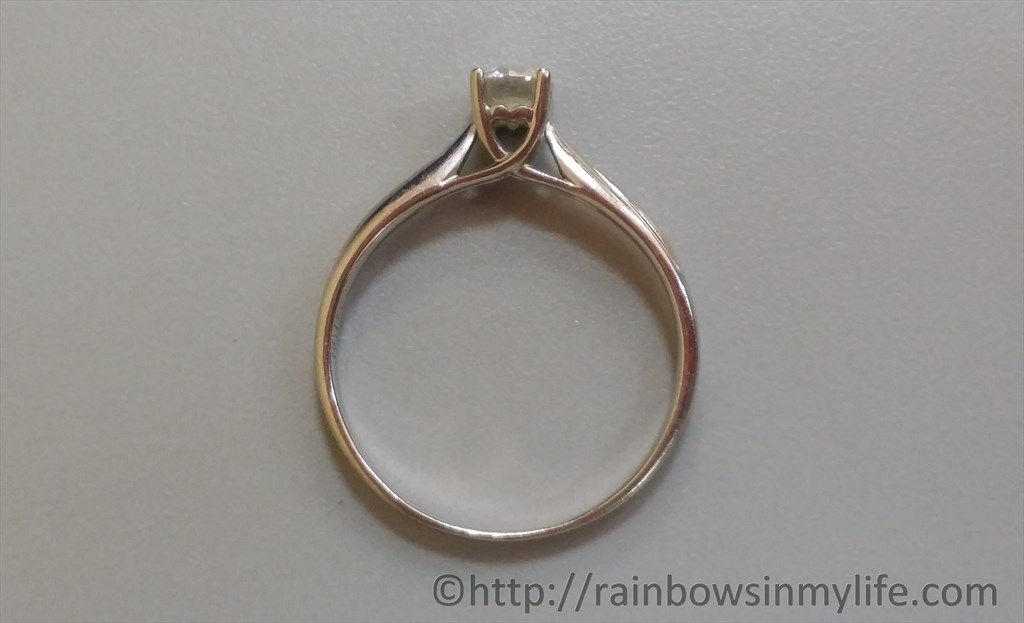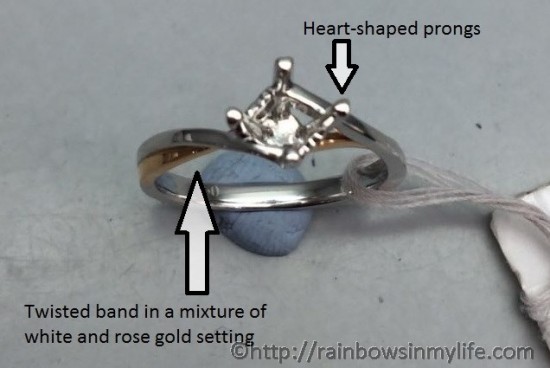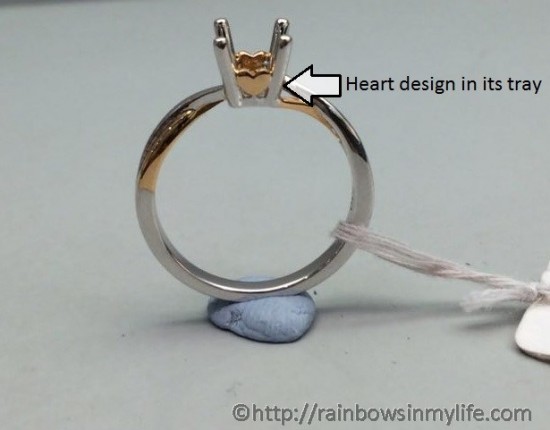Everyone wants an engagement ring that is uniquely theirs. I do and I am sure you do as well, right? Some of the elements you can consider/choose in making your engagement ring unique to you and your other half are mentioned below. The points listed are all of my own opinions formed based on my limited knowledge about the topic. Please speak to an experienced jeweller for your own ring design! =D
1. The number of prongs holding your ring
The two most common number of prongs used are four prongs and six prongs.
| Four Prongs Settings | Six Prongs Settings | |
|---|---|---|
| Diamond showcased | With lesser prongs, more of your diamond can be seen and not covered by them | More of your diamond will be covered by the prongs |
| Security | With less prongs holding your diamond in place, it would be less secured as compared to one which has more prongs | More prongs would hold your diamond more better than one with lesser prongs, providing more security |
| Which to choose? -diamond size -lifestyle The larger your diamond, the more frequent you wear your ring and the more active/”dangerous” your lifestyle is to your ring, the more security you need to hold your diamond in place. | Choose 4 prongs if your diamond is smaller. In this way, you do not need as much prongs to secure it as compared to a bigger diamond. Less of your precious diamond would be covered too. | Choose 6 prongs if your diamond is bigger. You can afford to have some of your diamond covered by the prongs in exchange for more security. After all, what use is there of a bigger diamond if it drops out? Imagine the horror when you discover that your diamond is missing from the ring! |
Having said that, I have also seen a ring with five prongs and it looks absolutely stunning!
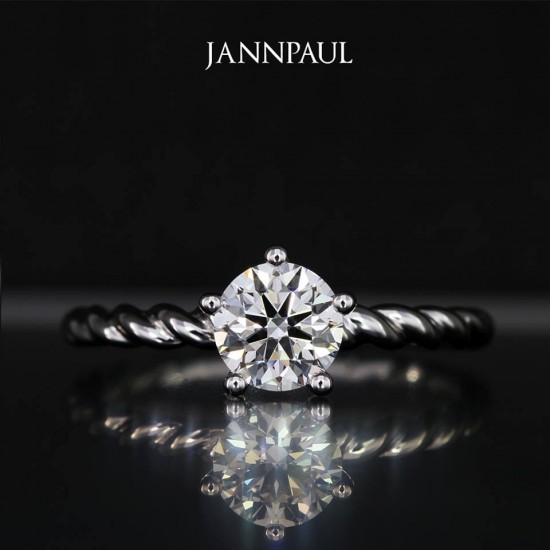
Image taken from JannPaul
2. Setting of the prongs
There are basically two different ways to set the orientation of the prongs of your ring: the Classic Orientation and the NSEW direction AKA the Compass Orientation.
In the former orientation, the prongs are set in the four corners of an imaginary box, making the diamond look more squarish. In the latter setting, the prongs are orientated in the direction of the compass North, South, East and West. With this, the diamond would appear rounder.
The classic orientation is preferred if you want to wear your engagement ring together with another ring. With the prongs angled at the sides, another ring can actually sit nicely on top/below the engagement ring with minimal any gaps in between. However, if your prongs are set in the compass direction, the prong set in the “S” direction would prevent your engagement ring from sitting nicely on top of your wedding band (or another ring). Likewise, the prong set in the “N” direction would prevent another ring from sitting nicely on top of your engagement ring. There would be a larger gap in between those 2 rings.
Of course, as long as you are happy, any orientation would suffice!
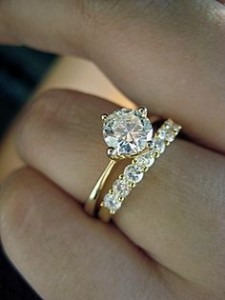
Image taken from Hardware Zone Forum
3. Design of your band and tray
As compared to the previous two points, where you have only either this or that to choose from, the design of your engagement band and tray is where you can unleash your creativity and come up with a ring that is uniquely yours. Besides the points mentioned below, there are so many more factors affecting the final look of your ring! Do you want a:
-tapered versus non-tapered band? (Tapered band means the band becomes thinner nearer the diamond. The thinner band would then make the diamond appear bigger)
-twisted versus normal band?
-band with or without side diamonds?
-band with flat edges or round edges?
A tray is where your diamond sits on in your ring. You can choose to customise your tray such that it incorporates elements of your relationship. Some examples include having a heart cut out in the tray, having flowers or leaves in the design or having owls or doves as your tray or even having your (and your significant other’s) initials to support your ring. Go Google and find some inspirations yourself!
4. Orientation of your diamond
This is not of much concern if your chosen diamond is round or heart-shaped. However, if you have a square diamond or even an Octagon (by JannPaul!), there are different ways to orientate your diamond. Please refer to the informative Youtube video by JannPaul for their Octagon diamond:
5. Material for your band
Some of the common metals used for the engagement ring bands are platinum, white gold, yellow gold and rose gold. In considering what metal to use for your engagement ring, it is important to factor in the cost, whether or not you would be wearing it together with the wedding band (in this case, it is more advisable to get the same metal for both your engagement ring and wedding band to prevent the harder metal from scratching the softer metal) and most importantly, your own preference of course! For example, when comparing platinum and white gold, platinum is more expensive, more durable, does not lose its shine, heavier and harder than white gold. (Some ladies might not like the weight of the heavier platinum on their fingers!)
Having come to the end of this lengthy post, I hope you understand a bit more about setting your own diamond or maybe even have an inkling of how you want to set your diamond. If you become more confused than before, do not fret! Just go down to a jeweller and get them to guide you through!
Happy E-ring hunting! Do leave a comment below to share your experience with me!
